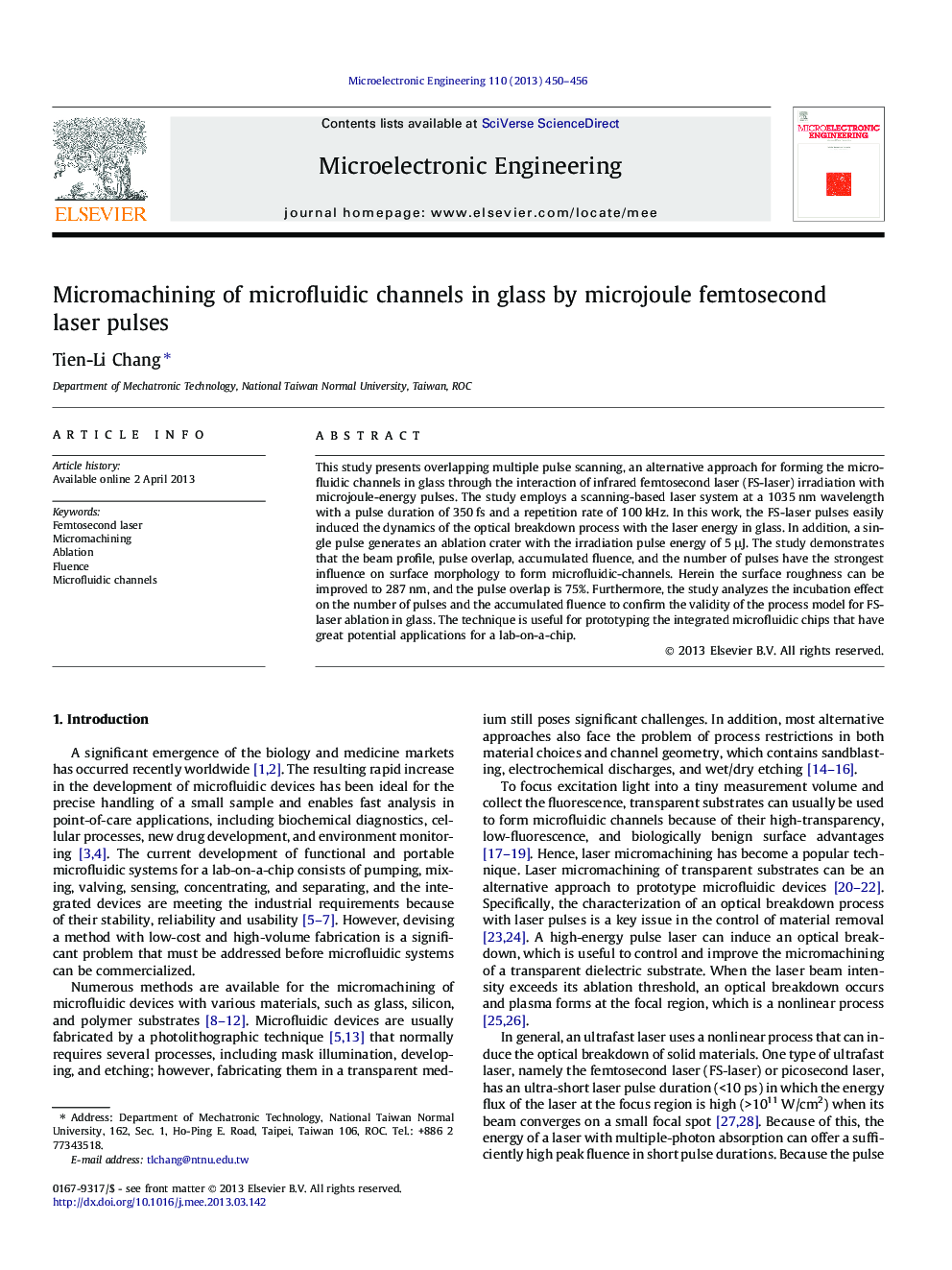| Article ID | Journal | Published Year | Pages | File Type |
|---|---|---|---|---|
| 544313 | Microelectronic Engineering | 2013 | 7 Pages |
•Overlapping multiple pulses to form the microfluidic channels can be proposed.•Process is used the infrared femtosecond laser irradiation with microjoule-energy pulses.•Surface morphology of the channels is determined by controlling ablation mechanism.•Accumulated fluence at the ablation threshold is a function of the number of laser pulses.
This study presents overlapping multiple pulse scanning, an alternative approach for forming the microfluidic channels in glass through the interaction of infrared femtosecond laser (FS-laser) irradiation with microjoule-energy pulses. The study employs a scanning-based laser system at a 1035 nm wavelength with a pulse duration of 350 fs and a repetition rate of 100 kHz. In this work, the FS-laser pulses easily induced the dynamics of the optical breakdown process with the laser energy in glass. In addition, a single pulse generates an ablation crater with the irradiation pulse energy of 5 μJ. The study demonstrates that the beam profile, pulse overlap, accumulated fluence, and the number of pulses have the strongest influence on surface morphology to form microfluidic-channels. Herein the surface roughness can be improved to 287 nm, and the pulse overlap is 75%. Furthermore, the study analyzes the incubation effect on the number of pulses and the accumulated fluence to confirm the validity of the process model for FS-laser ablation in glass. The technique is useful for prototyping the integrated microfluidic chips that have great potential applications for a lab-on-a-chip.
Graphical abstractFigure optionsDownload full-size imageDownload as PowerPoint slide
